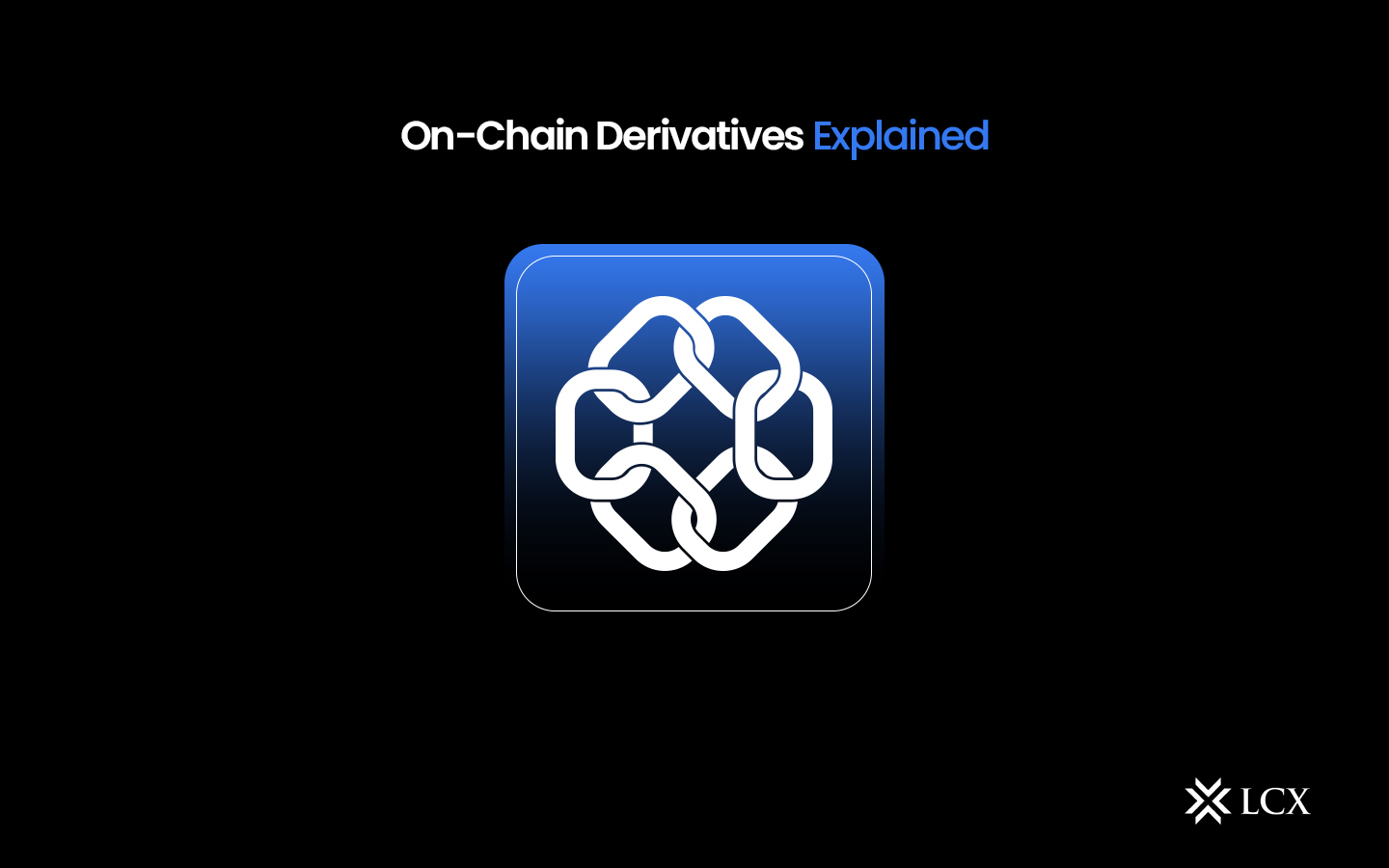The blockchain industry has presented a variety of ways in which blockchain technology can transform conventional systems by enhancing operational efficiency, increasing flexibility, and lowering costs. Perhaps nowhere is this more evident than in the financial services sector, where interest in blockchain-enabled decentralized finance (DeFi) applications has exploded in recent years. This new technology has begun to be incorporated into a growing number of financial products as the blockchain industry continues to pave the way for an exciting wave of new, real-world solutions that increasingly align with conventional investor interest. Consequentially, blockchain’s continued adoption has had an effect on the global derivatives market, which is estimated to be worth more than $1 quadrillion USD.
Introduction to Financial Derivatives and Crypto Derivatives
In the financial services industry, a derivative is a financial product whose value is correlated with the characteristics of an underlying asset. The purchase and sale of a derivatives contract do not involve the physical exchange of the underlying asset. Rather, the value of the traded derivative is determined by a predetermined metric associated with its underlying asset. Due to the fact that the value of a derivative is founded on the dynamic characteristics of its underlying asset, the market price of a derivative contract fluctuates over time in accordance with the expected outcome of the trade.
A derivative can be based on practically anything, tangible or intangible, as long as it has a characteristic that can be assigned a price based on a framework that is mutually acceptable. As a result, there are numerous derivatives, spanning from futures and options to swaps and collateralized debt obligations, that can be pegged to virtually anything imaginable.
In the past decade, the majority of crypto investors have predominantly engaged in spot trading, which involves the immediate purchase and sale of an asset at a mutually agreed-upon price. As investor interest in the space has increased, however, new cryptocurrency-based derivatives have emerged, granting traders access to a broader range of potential investment strategies.
In 2011, futures contracts based on the price of bitcoin (BTC) were the first crypto derivatives to be introduced to the market. Several years later, exchanges began providing a broader selection of derivatives that investors could use to hedge against anticipated market movements and profit from future price volatility. By 2023, the crypto derivatives trading market had erupted to all-time highs.
Understanding On-Chain Derivatives
Derivatives have long been an integral part of traditional financial markets, allowing investors to speculate on the price movements of an underlying asset without owning it directly. On-chain derivatives extend this concept to the crypto market, bringing transparency, efficiency, and decentralization to derivative trading.
On-chain derivatives are smart contracts that enable the creation and trading of derivative instruments, such as futures, options, swaps, and more, using blockchain technology. These contracts are self-executing and operate without intermediaries, ensuring trust and eliminating the need for third-party intervention. The underlying assets for on-chain derivatives can include cryptocurrencies, tokens, or even real-world assets that have been tokenized.
Benefits of On-Chain Derivatives
Enhanced Transparency and Efficiency
One of the most significant advantages of on-chain derivatives is the unprecedented level of transparency they offer. Traditional derivatives markets often suffer from opaqueness, making it challenging for market participants to gain insights into the underlying transactions and pricing mechanisms. On-chain derivatives, on the other hand, enable real-time tracking and auditing of every transaction, making the market more transparent and reducing the risk of manipulation and fraud.
Moreover, the automation provided by smart contracts streamlines the entire lifecycle of derivative contracts. Through self-executing agreements, on-chain derivatives eliminate the need for intermediaries, reducing costs and inefficiencies associated with traditional processes. This efficiency not only benefits market participants but also increases overall market liquidity, as on-chain derivatives are accessible to a wider range of investors, regardless of their geographical location or capital size.
Risk Management and Regulatory Compliance
On-chain derivatives provide advanced risk management capabilities by enabling the creation of complex financial instruments that can hedge against various market risks. Through the programmability of smart contracts, market participants can tailor derivative contracts to suit their specific risk profiles, effectively managing exposures to price fluctuations, interest rate changes, and other market uncertainties.
Furthermore, the decentralized nature of blockchain technology empowers regulators with real-time visibility into derivative transactions, facilitating more effective oversight and regulatory compliance. The immutability of the blockchain ensures that all transactions are recorded permanently and cannot be tampered with, enabling regulators to monitor market activities with a greater level of confidence.
Use Cases of On-Chain Derivatives
Hedging: On-chain derivatives enable crypto holders to hedge their positions against price volatility. For example, futures contracts allow investors to lock in a predetermined price for buying or selling an asset in the future, mitigating the risk of price fluctuations.
Speculation: Traders can leverage on-chain derivatives to speculate on the price movements of cryptocurrencies and other assets. By taking long or short positions through derivatives, traders can potentially profit from both rising and falling markets.
Risk Management: On-chain derivatives provide risk management tools for decentralized finance (DeFi) protocols. These protocols can utilize derivatives to manage exposure to volatile assets, balance portfolios, and create more stable financial products.
Yield Farming: On-chain derivatives can be integrated into decentralized finance platforms to enhance yield farming strategies. Derivatives enable users to lock in their assets and receive additional rewards or tokens, creating new opportunities for generating passive income.
Challenges and Considerations
While on-chain derivatives offer numerous advantages, there are also challenges and considerations to be aware of:
Smart Contract Risks: On-chain derivatives rely on smart contracts, and vulnerabilities in these contracts can lead to financial losses. Thorough code auditing and security assessments are crucial to minimizing risks.
Regulatory Environment: As on-chain derivatives gain popularity, regulators are paying increased attention to the crypto market. The regulatory environment is still evolving, and it is essential for participants to stay updated with the legal and compliance requirements in their jurisdictions.
Liquidity: Liquidity is a vital factor in derivative markets. On-chain derivatives need sufficient liquidity to ensure efficient price discovery and smooth trading. Developing liquidity pools and attracting market participants are ongoing challenges that need to be addressed.
Education and Awareness: On-chain derivatives are relatively new, and understanding their intricacies requires a certain level of knowledge and expertise. Education and awareness initiatives are necessary to ensure users can navigate these instruments effectively and make informed decisions.
Conclusion
On-chain derivatives have the potential to revolutionize the crypto market by providing transparency, security, accessibility, and decentralization. These financial instruments offer a wide range of benefits, from hedging and speculation to risk management and yield farming. While challenges exist, such as smart contract risks and evolving regulations, the opportunities presented by on-chain derivatives are significant.
As the crypto market continues to mature, on-chain derivatives are poised to play a crucial role in shaping its future. By embracing the advantages of blockchain technology, these derivatives provide a decentralized and efficient way for individuals and institutions to engage in derivative trading. As investors and traders become more comfortable with on-chain derivatives, we can expect to witness the emergence of innovative strategies and further growth in this exciting sector.










